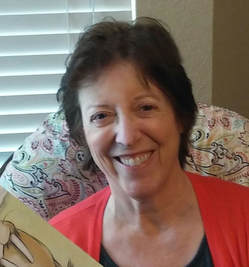 Guest Post by Lori Mortensen 24 Carrot Writing is pleased to welcome Lori Mortensen, award-winning children’s author of more than 70 books and over 350 stories and articles. If you’re like me, one of the favorite parts of a picture book is the little surprise at the end. After following the intriguing story page by page, I’m always looking forward to see how the author will wrap it up. Will the ending be ho-hum predictable, or will the author create a wonderful ending that’s often described as “unexpected, yet inevitable”? Exceptional endings not only satisfy the story problem, but they fulfill it in a surprising and unexpected way. At first, simply solving the story problem might seem like the obvious way to bring a story to a satisfying close. For example, if Sally wants a pet, she gets a pet. If Sam loses his kite, he gets it back, etc. But exceptional stories take that extra step. In my rhyming picture book, Cowpoke Clyde and Dirty Dawg that became one of Amazon’s Best Picture Books of 2013, Clyde wants to catch his dog for a bath. So, the obvious ending would be Clyde catching his ol’ dirty dawg and giving him a bath, right? However, as I wrote the story, I knew that predictable ending wouldn’t feel satisfying. There had to be more than Clyde just getting his way. As I wrote, I became excited about where the story could lead. With each successive page turn, I showed Clyde trying to catch his dog, each attempt more comical and disastrous than the last. I told myself, Clyde would get so frustrated he would …. What would he do? I wondered. 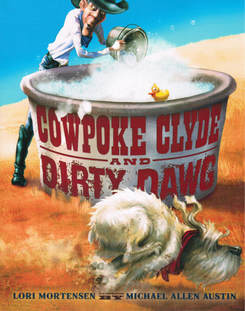 I was delighted when I instantly realized things would get so bad, Cowpoke Clyde would scrap the whole idea. Oh, no! I thought. How is Clyde going to bathe his dirty dog now? I was just as eager to find out what would happen as I hoped future readers would be. Moments later, I knew what my ending with a twist would be. Instead of Clyde actually catching his dog, he’d scrap the whole idea, then take the bath himself. Whoa! I didn’t see that coming, but it felt absolutely perfect. As Cowpoke Clyde scrubbed and crooned in the tub, Dirty Dawg joined him with a tremendous SPLASH! At this point, I realized the story wasn’t about Clyde checking off a laundry list of chores. It was about them---Cowpoke Clyde and Dirty Dawg. Once Clyde stopped trying to finagle his dog into the tub, the duo discovered that taking a bath was something they both enjoyed. I avoided a didactic ending where Cowpoke Clyde showed Dawg who was boss and turned it into a satisfying friendship story that drew Cowpoke Clyde and Dirty Dawg together. I was just as pleased with this unexpected ending as I knew the reader would be. 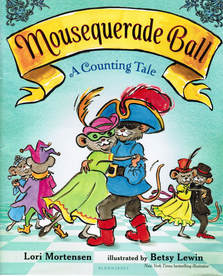 Another example is my counting picture book, Mousequerade Ball, illustrated by Betsy Lewin. In my original story, mice arrive at a ball in ascending numbers from one to 10. At the climax, a cat shows up and scares them away in descending order back to one. A fun idea, but after several rejections, I knew it needed a more satisfying ending with an unexpected twist. But what? I decided the solution rested with the cat. Instead of arriving as a threat, the cat shows up only wanting to dance. This unexpected twist gave the story a new meaning and level of satisfaction. It wasn’t simply a book that counted mice up and down. It became a story about friendship and inclusion. 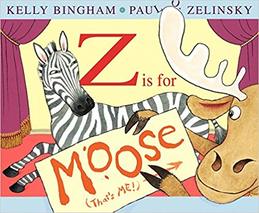 One of my favorite picture book endings with a twist is Z is for Moose by Kelly Bingham. In this story, Zebra directs alphabetical characters to their correct place on the page and Moose can’t wait to be featured with the letter “M.” However, when “M” comes along, Mouse gets the coveted spot, much to Moose’s dismay. As the alphabet continues, Moose becomes more and more distraught when it looks as if he’s never going to get a chance to fit in. Then, Kelly dazzles the reader with her own special brand of “unexpected, yet inevitable” magic. When the reader finally gets to “Z,” it reads, “Z is for Zebra’s friend, Moose.” Awww! This unexpected ending not only fulfilled Moose’s desire to be in the alphabet, but it cemented Zebra’s and Moose’s friendship in a surprising and touching way. 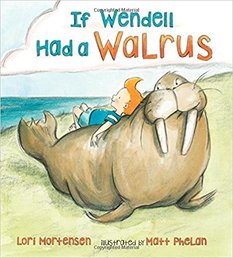 This year, my picture book If Wendell Had a Walrus hit the bookshelves. In this story, a boy named Wendell wants a walrus. Of course, the obvious ending would be Wendell getting a walrus. However, as I wrote along, a different ending came to mind. As soon as I wrote it, I knew it was the perfect ending with a whale of a twist. Would Wendell get a walrus? What do you think? So, the next time you’re puzzling over a manuscript, think about your favorite picture book endings and why they work. Did they have an “unexpected, yet inevitable” ending with a twist? Then play around. You may not find the right ending right away. It may take time to sort through all the options that spring to mind at first. But keep at it. If you do, one day an author may be writing a blog about your book and its wonderful “unexpected, yet inevitable” ending with a twist. Lori Mortensen is an award-winning children’s author of more than 70 books and over 350 stories and articles. Recent releases include If Wendell Had a Walrus, illustrated by New York Times bestselling illustrator Matt Phelan (Henry Holt), Chicken Lily, (Henry Holt), Mousequerade Ball (Bloomsbury), illustrated by New York Times bestselling illustrator Betsy Lewin, and Cowpoke Clyde Rides the Range (Clarion), a sequel to Cowpoke Clyde & Dirty Dawg, one of Amazon’s best picture books of 2013. When she’s not letting her cat in, or out, or in, she’s tapping away at her computer, conjuring, coaxing, and prodding her latest stories to life. For more information about her books, teacher activities, critique service, events, and upcoming releases, visit her website at www.lorimortensen.com.
4 Comments
 by Francine Puckly A number of years ago, I began my illustrious side career as taxi driver. I shuttled my kids to school, various music lessons, drama, hundreds of soccer and baseball practices, student council meetings and friends’ houses. The numerous hours allocated to driving substantially cut into my personal reading time, and one-half of every roundtrip was spent alone in the car. After having exhausted every last FM radio station and my expansive iTunes library multiple times, I somewhat reluctantly turned to audio books for sanity and entertainment. There were fits and starts with this new form of story consumption. I was skeptical that I could pay attention to a story while driving, and I struggled when certain readers had voices and cadences that didn’t keep my attention, or worse, downright irritated me. But over time I tweaked my selections, and I have come to embrace this form of reading. I actually look forward to driving now! It was a huge surprise to me to find that I remember plot and subplot structures, character flaws and descriptions, themes, clues, and imagery far better with an audio performance than when I read a paper version of the same story. I believe there are a few reasons for this. First, I can’t jump ahead. Ever read a suspense novel and can’t stand the thought that the character might be killed off? And then you find yourself peeking at who’s still alive on the last pages? Well, guess what? You can’t do that with an audio book! It’s maddening, but because I have to stay firmly in the current section of the story, it makes me acutely aware of how the author is teasing the story line and emotionally engaging me as a reader. Second, you read (or hear) every last word. There is no speed-reading or skimming or “let me see what’s going on at the beginning of the next chapter” sorts of cheating. By noting adjective and verb choices as well as passages of descriptions you love and those you might find tedious, you’re able to see what works for the story and how those techniques may or may not apply to your own writing. Third, pauses are emphasized. I can (and need to) shut off the recording for a few minutes between sections to analyze how the author has wrapped up phrases, chapters or complete sections. This reflection helps me discover how the author has left me hanging until she presents the next morsel for me to consume. If you’ve never tried audio books, here are a few hints to help you get started:
So whether you’re painting a room, taking a solo cross-country trek, or driving in circles dropping your kids at various activities, expand your reading time in the new year! Good luck and happy reading! ~ Francine  ~by Amanda Smith On our way to school one morning, my son noticed the particularly enormous, jacked up Ford F150 in front of us. Honestly, one couldn’t miss it. The sun danced on its shimmering black body, with shiny silver decals, and its upgraded suspension revealed a dazzling chrome plated differential. “Why do people do that?” my sensible son asked. “Why do you think people do that?” I stalled while reaching for my sunglasses. “Maybe to go off road?” Mr. Practical said. “Because it looks cool,” the young idealist in the back seat chimed in. In silence we considered the brilliant black beast. As it veered to our right we pondered the larger-than-life wheels, their chrome rims happily casting sun stars in our eyes. “Well,” said Mr. Practical, “it certainly adds interest.” And with that he got me thinking. A pick-up truck is the ultimate utility vehicle. America’s workhorse. Full-on functionality. The contractors’ reliable staple. Like plot. Plot is the writer’s Ford F150. It steadily carries all our tools, our characters, our story, and our devices. But just like pick-up trucks, plots can do with a little bling. So how can we add a lift-kit, decals, or some chrome plating to our writing?
 ~ by Amanda Smith Last week we focused on using basic plotting techniques to help organize scenes that were random and unconnected, like a hand full of beads. If you missed last week's post, you can find it here. What if you're done drafting, though? Does that mean you have no more use for plotting techniques? Writers often use note cards to block out scenes. For me the note card technique worked well after I finished my second draft. I combined the information from a mapping workshop, taught by Katie L. Caroll (Elixer Bound) and a workshop on non-sequential writing by Lynda Mullaly Hunt. (One for the Murphys, Fish in a Tree) to come up with a note card that served my purpose for revision.
These note cards against my wall helped me see the entire novel at one glance. I was able to check the balance and switch-off between narrators. Imagine my joy when I realized my main characters narrate exactly the same amount of scenes! These cards showcased the rising action, emotional arc, and the function of each scene. I could see where to change the order of scenes to build tension or give a breather. They showed where to add a scene or when a character fell out of the story. As I studied these cards, I was able to make subtle changes to strengthen the plot. I added bits of dialogue or "what ifs" on sticky notes. When I went back to my manuscript I could try out these new takes to see if they worked better. The note cards served as a place for ideas and thoughts to land when I couldn't get to my manuscript right that moment. Revision time is also a good stage to implement character interviews, another plotting technique. There are multiple character interviews online that you can tweak to meet your needs. After filling out interview questions, add descriptors and specifics to enhance characters, and check for character consistency. I found it very enlightening to also interview all secondary characters. Going back and adding the smallest of details can enrich secondary characters and make them feel like real people.
Many authors have a treasure trove of plot development strategies on their websites. Don’t feel overwhelmed by them. Take these plotting devices and adapt them to work for you and your process. And it is a process! Use some before you start, some during drafting, and some during revisions until all your scenes are perfectly placed like beads on a string. 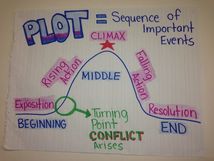 ~by Amanda Smith The first time I saw plot planning templates I was simultaneously impressed and petrified. These templates assumed that the writer already knew a whole lot. All I had when I started my novel were a handful of characters, an idea for conflict, and only a fleeting emotion I felt after waking up from an angsty dream. We discover the story, the characters, the PLOT as we go. While some writers are brilliantly organised, writing a novel from beginning to end, there are just as many who write non-sequentially. Does that mean these fabulous plotting techniques are not for us scatterbrains? Not at all. These templates and techniques can be used throughout the first couple of drafts. So how do you plot when you write at the whim of the character voices in your head? The following strategies helped me string numerous non-chronological scenes, like beads on a necklace, into a viable story line.
Join us next week when we'll look at using other plotting tools and techniques during the revision stage of your project. In the mean time, arm yourself with a pack a sticky notes and a blank wall and you'll find that plot planning templates are less petrifying and more productive.
 by Francine Puckly With a chill in the air and notoriously unpredictable weather, Opening Day is upon us. Hot dogs, popcorn and peanuts, new lineups, and impeccable turf await. A few years ago Ted Berg penned an article entitled, “The 10 Best Things about Opening Day” (http://www.usatoday.com/story/gameon/2013/04/01/10-best-things-about-opening-day/2041583/). There’s nothing quite like a new baseball season, and there’s nothing quite like the feeling of beginning a new project or novel. And here’s how Berg’s Top 10 applies to starting a brand new novel! 10. Fresh Looks In baseball, this means it’s time to sport new uniforms, but for me and my new novel, we’re showing off new software (Scrivener), flashy new composition notebooks, my favorite pens and Sharpies, and a multitude of jewel-toned post-its I purchased in the off season. My reusable foam plot-planning poster board is ready to take the field. This is the best my writing space will look for months and maybe years! And wait! What’s that sound? I think the organist is playing the first few bars of “Take Me Out to the Book Store.” 9. Ballpark favorites again available Berg said that, “opening day provides an opportunity to eat hot dogs without being judged.” And for writers, the first draft is our opportunity to slap down all of the crazy ideas that come to mind as we crank through the what-ifs of a new story littered with a cast of new characters. No limiting expectations, no reviews, no analyses. It might be the only time in our writing process we’re not worried about the agent or editor, the reader, the critic, missing story parts, or the dilemma of what stays and what goes. 8. Spring training is over So is your research. At least for now. It’s time to play ball…er, write the draft. That means don’t stop to research. Flag any missing pieces of information with those pretty little post-its you bought. 7. Bunting As MLB and various ballparks roll out elaborate décor, you might look to playlists with songs that suit your characters or intended plot, a collage of magazine clippings or photos that depict character and setting, or Pinterest files to inspire your writing. Adorn your workspace with helpful details. I have a collage of photos I’ve taken and/or downloaded from the Internet posted in my writing area. Whenever I feel stymied on plot, I study those for inspiration. 6. The pageantry First pitches, national anthems, and introductions of every player, coach and trainer. Writing pageantry is introducing each room, character and supporting character. We plunge into detail the way Milwaukee’s Bernie Brewer plunges into a huge mug of beer. We immerse ourselves in detail. The rooms of the house. The landscape. The shingles and siding. Every character. 5. Ridiculous “pace” stats “For one day in 1994,” Berg wrote, “Cubs outfielder Karl ‘Tuffy’ Rhodes was on pace to hit 486 home runs in a season after a three-homer opening day outburst.” Nobody hits 486 home runs in a season. And those 50,000 words for NaNoWriMo? That’s 600,000 words a year, or ten+ middle grade novels a year. Woo hoo! And those 41 ideas you had for PiBoIdMo last year? You’re going to write over 400 picture books this year! NOT. They’re impossible numbers to sustain, but that doesn’t mean we can’t rejoice in getting off to a ridiculously fast start as we leave our inner critic behind. 4. Skipping school or work Playing hooky to do what we love is easy at the beginning. At the start of a project we are willing to decline other opportunities so that we can take our laptops and notebooks off to write in seclusion. But eventually life’s demands creep in and the next thing we know we’ve missed four days (or maybe even four weeks!) straight. What we can learn from playing hooky or skipping other commitments is how to make our writing a priority year-round, not just at the launch or as we approach the finish line. Set some goals, people! And reward yourselves when you hit them! (http://www.24carrotwriting.com/-blog/give-yourself-a-carrot). 3. All of the aces Who are the heavy hitters in your story? Make sure you have a great team of characters to support your plot. 2. Every team is undefeated. So is your project. No rejections. ’Nuff said. And the number one thing about Opening Day? 1. They play baseball. And we write novels. Or illustrate books. We have the coolest jobs on earth. Now get out there and throw the first pitch!  by Annie Cronin Romano So often we start a project with an idea, a glowing nugget of inspiration, and we decide immediately the kind of book it will be. It's going to be a picture book. Yes, definitely a picture book…about flying sandwiches. Excellent! Off we go! We brainstorm, diagram, scribble, and plot. We develop our characters, our setting, and our pacing. We draft a beautifully crafted 550 word picture book about sandwiches that fly and submit it to our critique group. And they tell us it should be a middle grade novel. About a food fight. *Head-desk* Why should we turn our picture book draft into a novel? Do we have to? Our critique group is not the boss of us, after all! True. True. But consider the reasons behind the suggestion. Is it because the setting or topic would appeal more to the older age group? Maybe the characters would present more strongly with an older voice? What about the plot? Perhaps it is one that is better suited (or even needed) in the older market. Or maybe your critique partners thought there was more to explore than you could do justice to in a shorter format. What if you played around with it, not as a middle grade, but as a chapter book? What if… As participants in critique groups, we often expect the critiques to focus on the story itself. Would our character really say this? Are we showing or telling? Watch the pacing. This is working. That is not. What we don’t usually expect is for critique partners to suggest changing the target audience. But sometimes it's an insightful idea. A middle grade story may work better as a picture book or a young adult novel. A young adult draft may be better suited as a new adult story. What the writer has in mind for a story often can benefit from considering all possible audiences. The first instinct may still be the best. But give it due consideration. Always ask, "What if…" So the next time you sit down to work on a story, be it a fiction picture book or young adult science fiction thriller, look at your idea from all angles. It could be that your flying sandwich would make an excellent food fight. ~Annie  by Annie Cronin Romano As writers of children’s books, we are told to read the latest works out there in our genre to be aware of what’s selling, what topics might be saturated, and what areas are lacking. However, this past week I read two middle grade novels that were published about twenty years ago: Freak the Mighty, by Rodman Philbrick, and Tangerine, by Edward Bloor. Both books had been recommended to me numerous times by young and old alike. It took me a while to get to them as I have been doing what is recommended: reading more recently published children’s books to keep up with the current market. But the last time I saw my sister, she asked me if I’d read those books yet. “I loved them! So did the kids! Read them!” Because I’m smart, I don’t argue with my sister, so off to the library I went. I am so glad I did! I thoroughly enjoyed both of them. Freak the Mighty particularly touched me as I work with special needs kids. And Tangerine won over my heart as this young boy stayed true to his passion of soccer while struggling to discover the truth about a family secret (I’d say more but I don’t want to give it away!). But what struck me the most about both of these novels was their timelessness. They are as relevant today as they were twenty years ago. This made me consider my own writing. Will the stories I’m writing be relevant down the road? It’s a vital question. Some books can be dated and may not carry over well in the future. Others have a timeless quality to them and can be appreciated long after their initial publication. While longevity is not necessarily a prerequisite for publication, it’s something to think about when writing. So while it is important to keep up with the current children’s market, don’t ignore those oldies but goodies. They have a lot to teach us about the craft of writing. ~Annie |
Peruse blogs for advice and tips from KidLit creatives.
Categories
All
Archives
April 2024
Click to set custom HTML
Click on the RSS Feed button above to receive notifications of new posts on this blog.
|

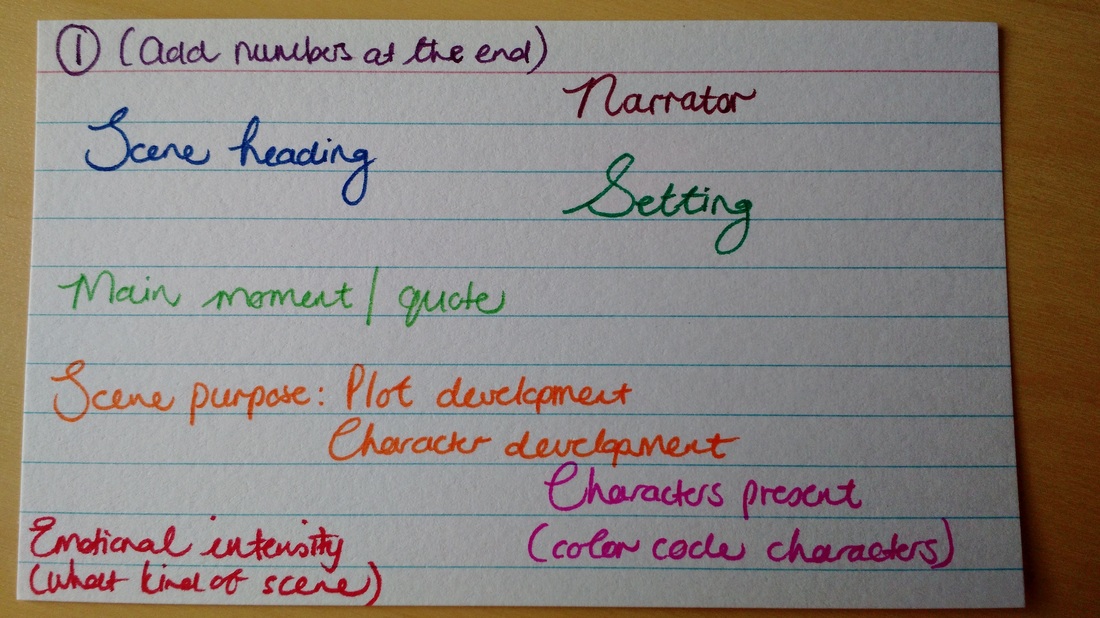
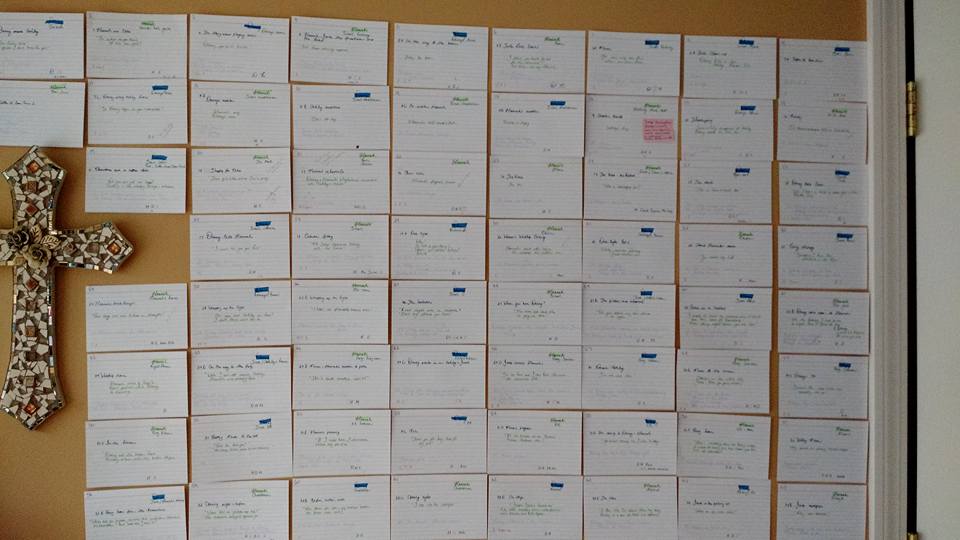
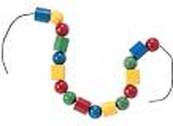
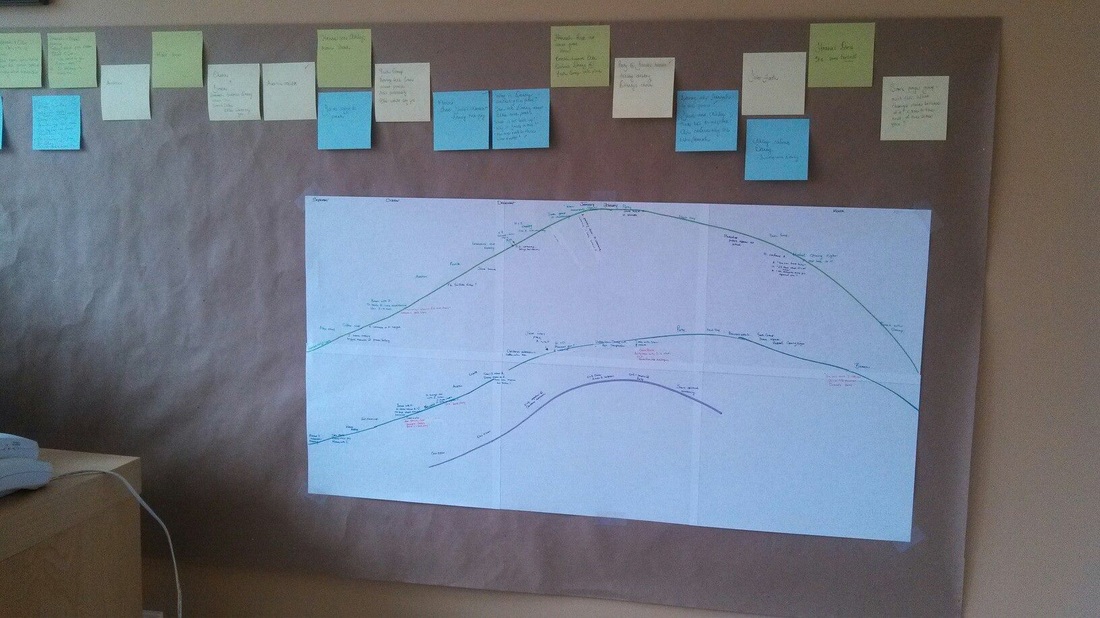
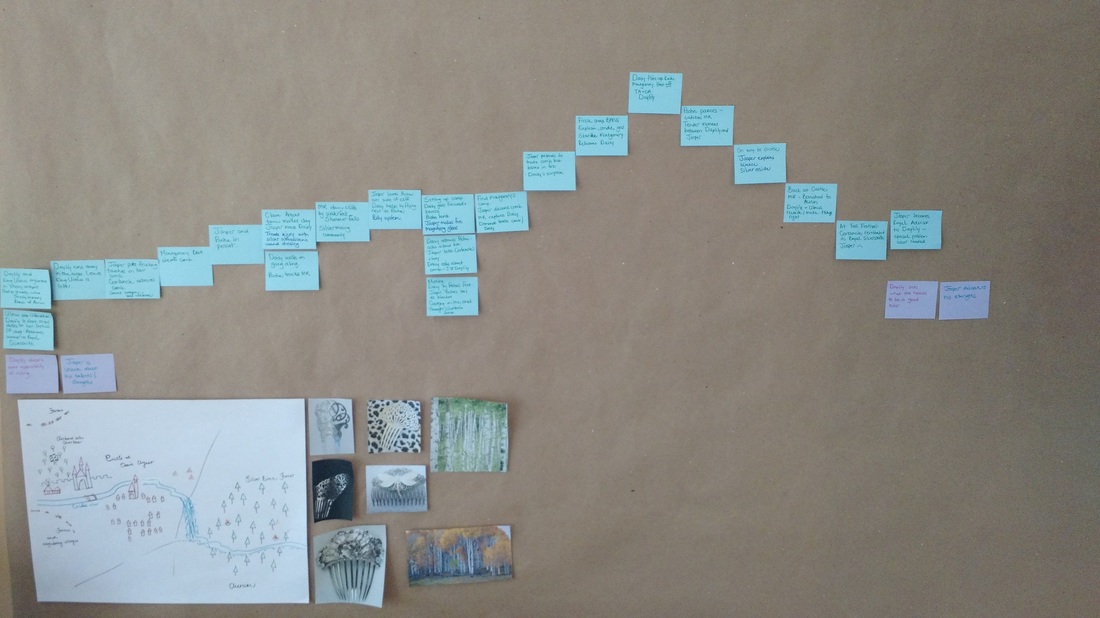
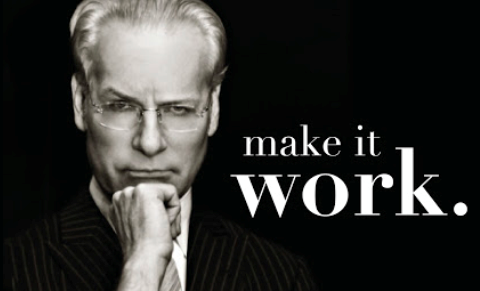
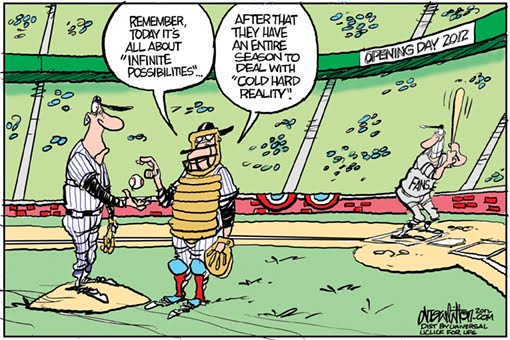
 RSS Feed
RSS Feed